Wondermondo 🢖 Lists and articles 🢖 Top 10 locations of California poppy meadows
Publication
Top 10 locations of California poppy meadows
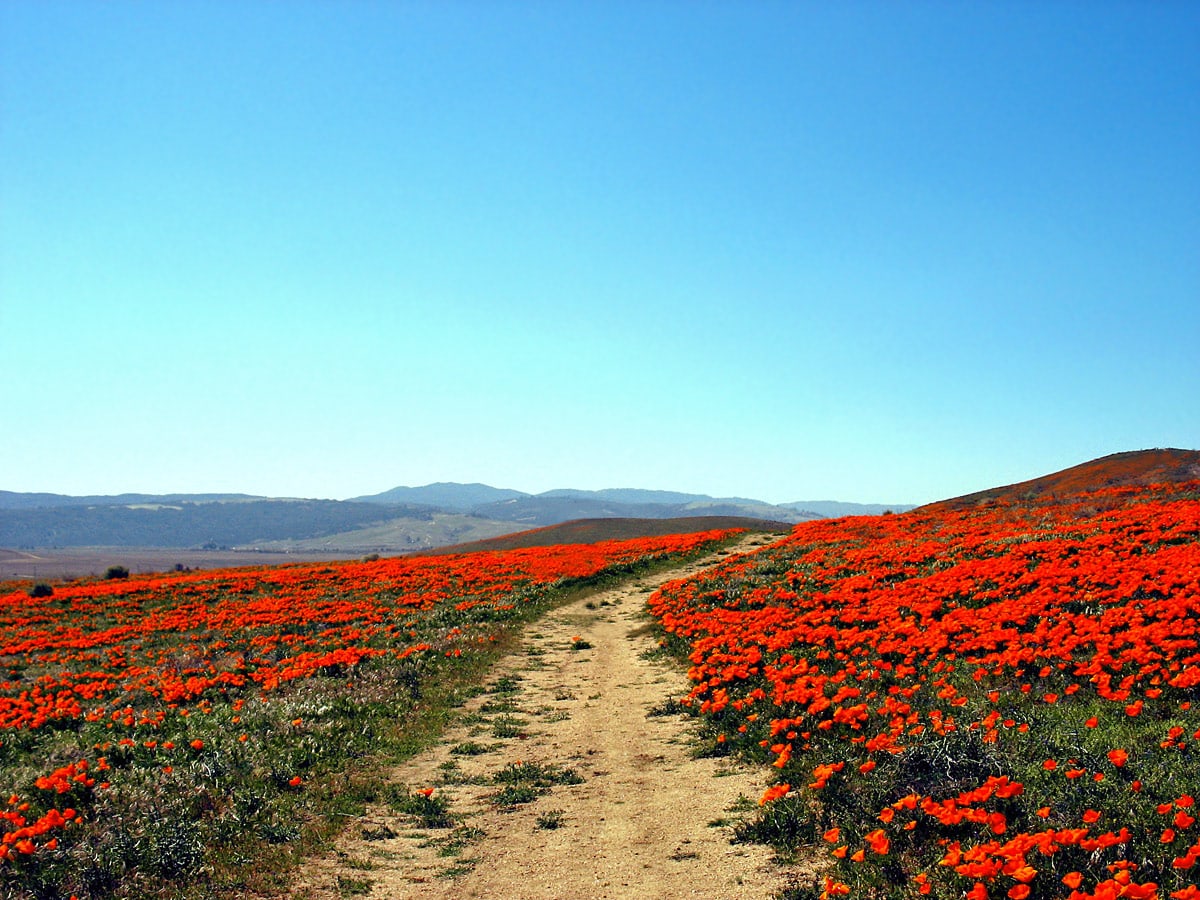
 In short
In short
California poppy (Eschscholzia californica Cham.) grows in the western part of Northern America from Oregon in the north to Baja California in the south. Even a single orange (often – yellow) flower of this plant emits fragile and exquisite beauty. Now try to imagine: there are locations where one can see millions of these beautiful flowers close together!
In this article are listed the 10 most gorgeous California poppy meadows.
Map of the sites
If you see this after your page is loaded completely, leafletJS files are missing.
 In detail
In detail
Little sun
California poppy belongs to a family of poppies. It certainly looks like a typical poppy with its bright colored cup of large, fragile petals and ternately divided, segmented leaves. It is hard to describe the color of this flower to those who have not seen it in life – it is a brilliant, clear orange or light orange color. This hue is of rare beauty and has given a deserved fame to this flower.
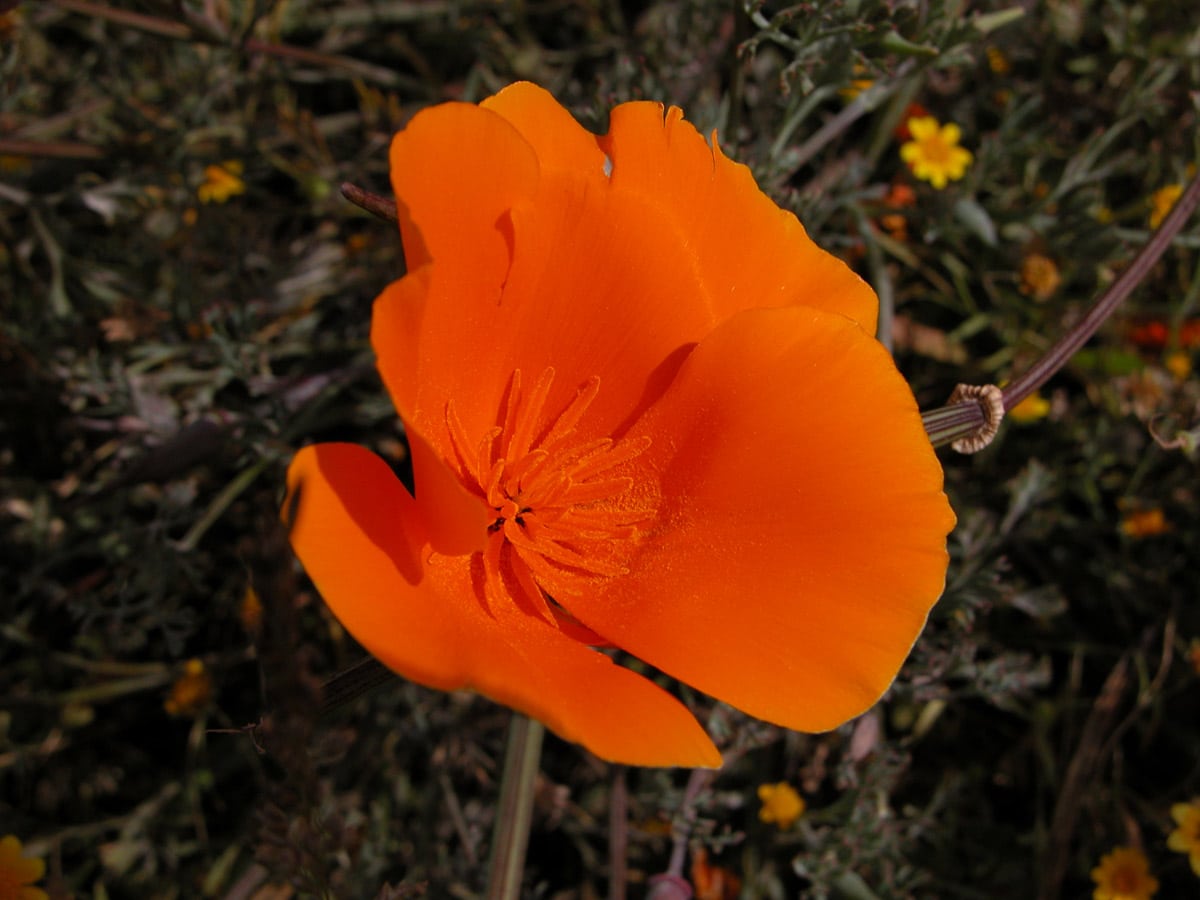
California poppies flower in spring – in late February – April. Often there happens a repeated flowering in autumn, September.
These flowers love grassy, open areas. Such are the arid grasslands of Californian intermontane valleys, seaside meadows, or talus of steep hillsides. In good conditions, flowers can be perennial, in colder conditions – annual. These poppies love sun and sandy, well-drained soil. They often re-colonize clearances after forest fires. Flowers are drought-resistant – in spring they cover areas which in summer seem to be nearly lifeless.
Before the night the flowers close and do not open if the weather is cloudy. This is an important factor when considering a visit to California poppy meadows.
California poppy is highly variable. Some specialists divide them into a number of subspecies or even distinct species.
Discovery of poppy fields
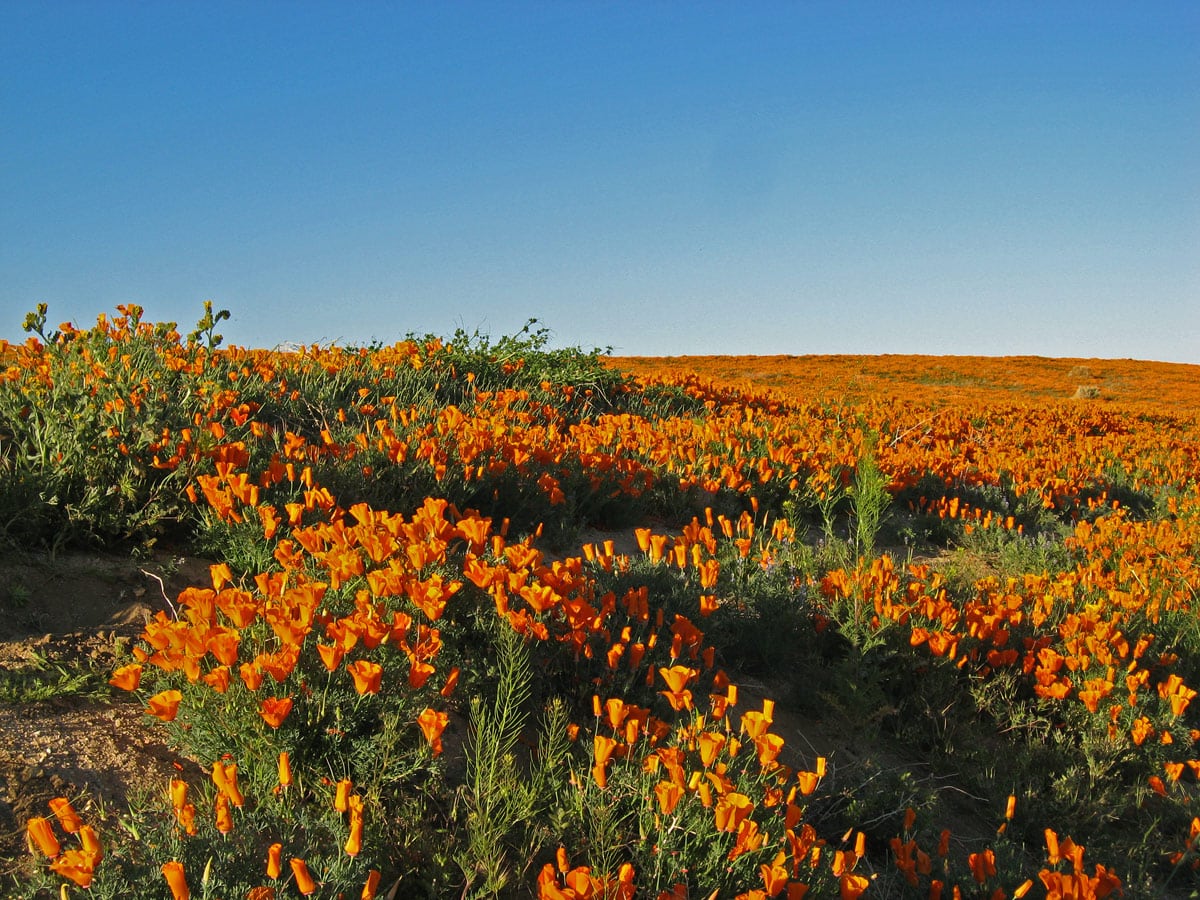
California was visited by white people for several centuries but only in the early 19th century, the bright orange poppy was described by scientists.
In the early 19th century Russian Empire organized several rather successful voyages around the world. Thus the empire extended the political and economical contacts. During such voyages groups of scientists traditionally were taken aboard. Brig “Rurik” made its trip in 1815 – 1818. The botanist of the team was German Adelbert von Chamisso but entomologist – Baltic German from the present-day Estonia Friedrich von Eschscholtz. Both became close friends during the expedition. When Chamisso described the beautiful orange Californian flower, he named the plant after his friend – Eschscholzia californica Cham. Letter “t” from the family of Eschscholtz somehow was lost.
Orange meadows
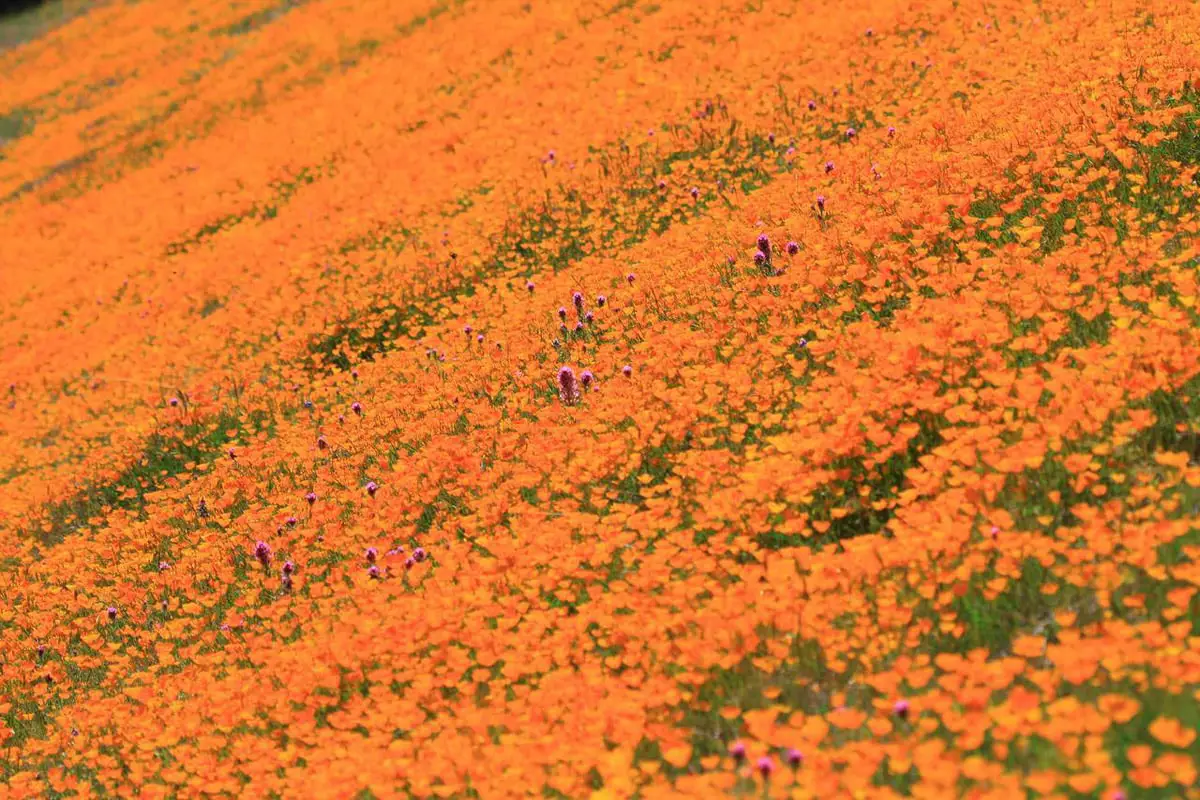
Great naturalist John Muir wrote in his memoirs: “Go where I would, east or west, north or south, I still plashed and rippled in flower-gems”. In 1868 he was privileged to see something that we won’t see anymore: the endless, 400 miles long and 30 miles wide “sea” of spring flowers of Central Valley in California. Most of this unique grandeur is gone now, meadows have been replaced by pastures, roads, and buildings.
California poppy meadows belong to the most impressive wildflower displays of the world. Their unusually clear and brilliant color seems to come from another, better reality. This flower has created a passion that is rare elsewhere in the world. Many Californians are obsessed with “wildflower hunting” – search of beautiful meadows, photographing, and just pure enjoyment of beauty. There are quite many species of wildflowers and many people here enjoy learning to distinguish them. This is a really nice retreat from the stressed rhythm of city life.
Conservation of meadows
Law prohibits picking or uprooting a California poppy in wild. But sometimes really nice poppy meadow without hiking trails might soon get a dense net of trails. If one car stops at the roadside and people walk out in the meadow, soon there stop ten more cars and people disperse in the meadow.
Due to this Wondermondo advises enjoying poppies in places which are suited for this: Antelope Valley Poppy Reserve, trails around Figueroa Mountain, Hite Cove trail, Point Buchon Trail. Although there might be more people, there are also more chances to see untouched poppy meadows.
Visitors face one potential danger while walking in California poppy meadows: rattlesnakes. Maybe there is little chance to meet them in late February – March, but you never know.
Links
- California State Parks. Antelope Valley California Poppy Reserve SNR, accessed on February 21, 2010
- California Poppy Festival, yearly event in Lancaster devoted to poppies, accessed on February 28, 2010
- California’s Esteemed Golden Poppy, Gardenguides.com, accessed on February 28, 2010
 Top 10 meadows
Top 10 meadows
01
Carrizo Plain wildflower meadows
 48.5%
48.5%
San Luis Obispo County
Carrizo Plain is one of the most unique and beautiful ecosystems in California. These arid grasslands have an especially high diversity of wildflowers. This includes California goldfield (Lasthenia californica DC. ex Lindl.), lacy phacelia (Phacelia tanacetifolia Benth.), California poppy (Eschscholzia californica Cham.), tidy tips (Layia platyglossa ( Fisch. & C.A.Mey.) A.Gray) and numerous other species.
02
Antelope Valley California Poppy Reserve
 48.4%
48.4%
Los Angeles County
The best known of all the meadows listed here. It is located in the western part of Antelope Valley and since the 1960ies there is a nature reserve. The area of the reserve is 1,777 acres (7.19 km2), state has arranged also tourist facilities and nature trails.

03
Bear Valley wildflower meadows, Colusa County
 43.8%
43.8%
Colusa County
The desolate and vast Bear valley is one of the largest remaining Californian arid grasslands. Besides the Californian poppies here grow creamcups (Platystemon californicus Benth.), adobe lilies (Fritillaria pluriflora Torr. ex Benth.) and many other wildflowers.
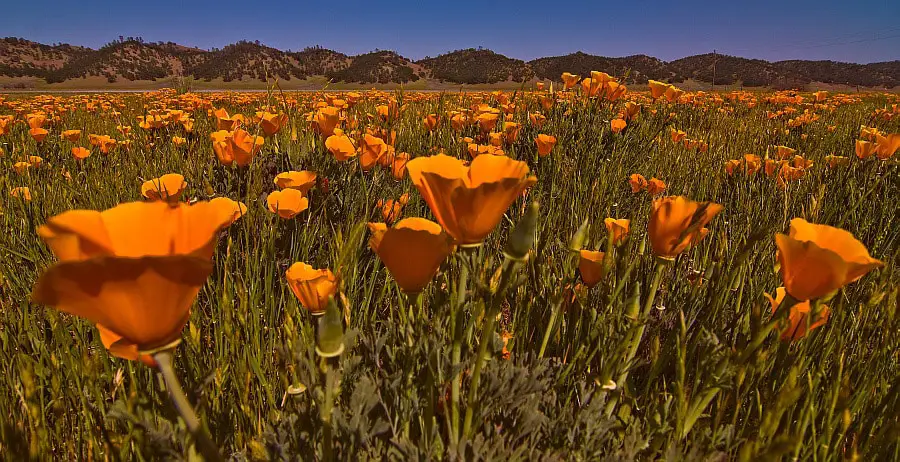
04
Walker Canyon poppy fields, California
 42.8%
42.8%
Riverside County
Some areas near the giant Los Angeles City have been spared of urban development and are relatively intact. One such location is the Lake Elsinore area, Walker Canyon.
One such place is on both sides of the I-15 highway between Alberhill and Lake Elsinore. For the most part of the year, these hills seem to be desolate and lifeless… But wait for a miraculous change in late February – April: millions of wildflowers color the hills in gaudy, lively colors!
05
Figueroa Mountain poppy and lupine fields
 41.5%
41.5%
Santa Barbara County
Hillsides of the Figueroa Mountain in the spring turn into beautiful, lush meadows with countless flowers. Add a stately backdrop of forested mountains and you get a perfect landscape.
In these meadows grow sky lupines and California poppies with patches of magenta padre’s shooting stars (Dodecatheon clevelandii Greene) and chocolate lilies (Fritillaria biflora Lindl.) and numerous other flowers. Gorgeous meadows of goldfields (Lasthenia ssp.) grow in more open areas.
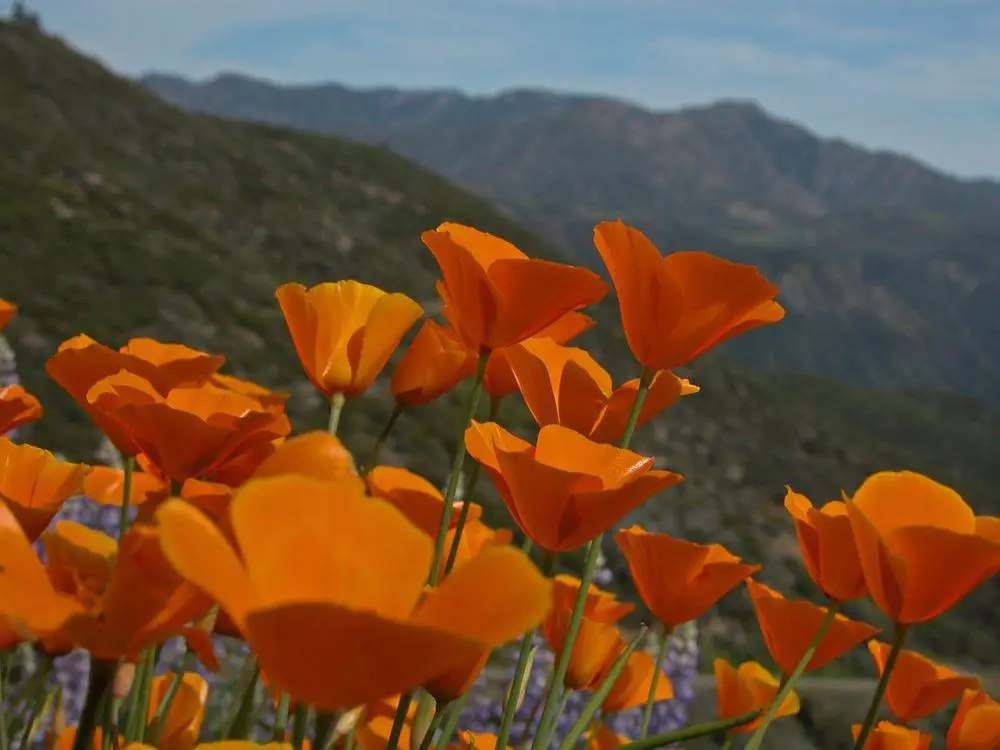
06
Poppy meadows of Merced Valley and Hite Cove
 41.3%
41.3%
Mariposa County
One of the most popular routes in Yosemite National Park is Highway 140 along the Merced River. Closer to the Yosemites the valley gradually becomes deeper and deeper. The steep hillsides on both banks of the river turn bright orange in springtime, during the bloom of poppies.
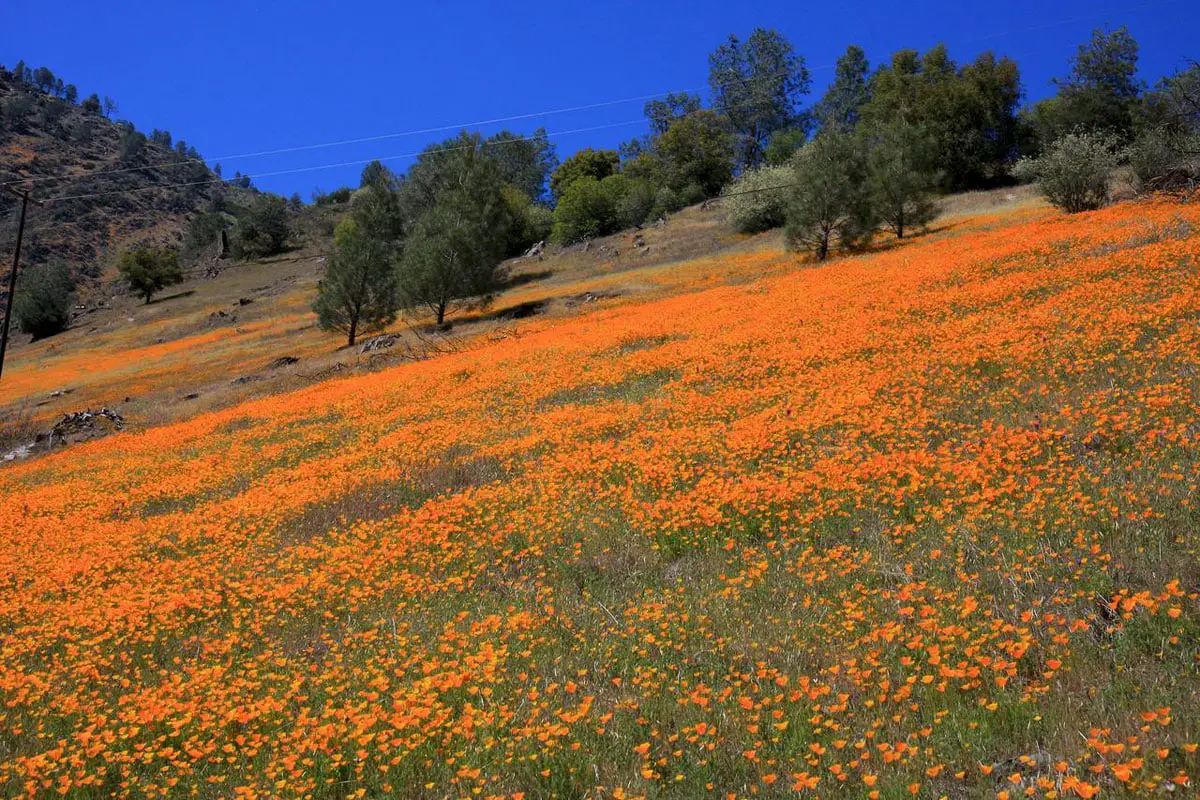
07
Flower fields of Gorman Hills
 41.3%
41.3%
Los Angeles County
Not too far from the famous Antelope Valley poppy meadows is one more location with millions of Californian spring flowers.
Most common flower species here are the yellow California tickseeds (Coreopsis californica (Nuttall) H. Sharsmith), blue Bentham lupines (Lupinus benthamii A.Heller), blue bluehead gilias (Gilia capitata Sims) and lacy phacelias (Phacelia tanacetifolia Benth.).
The beautiful California poppies add orange accents and in many places, they form golden-colored meadows.
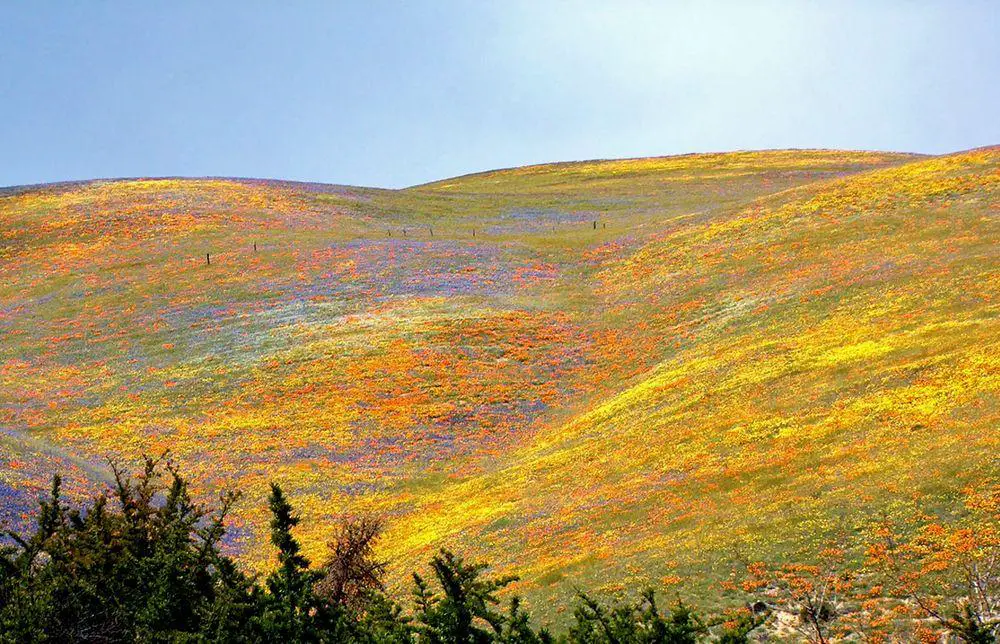
08
Point Buchon poppy meadows
 39.8%
39.8%
San Luis Obispo County
At Point Buchon is one of the best seaside Californian poppy meadows. This approximately 6 km long stretch of the seaside plain is covered with millions of bright orange flowers during the spring.
For long years these beautiful meadows were closed to the public. From 2007 to 2008 up to 275 people per day can enjoy them.
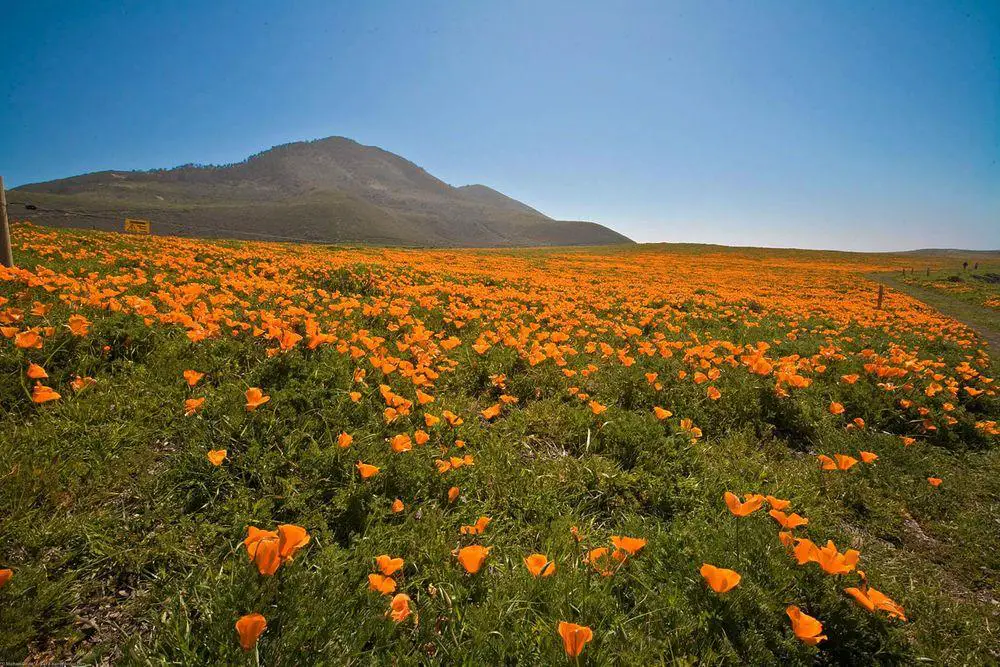
09
Shell Creek Road meadows, California
 39.8%
39.8%
San Luis Obispo County
These meadows can serve as a teaching ground for learning the Californian wildflowers. Undulating hills with occasional groups of trees and gallery forest form a lively landscape. Towards the north, the valley becomes more arid and devoid of trees. But even this place is very rich with spring wildflowers in late February – April.
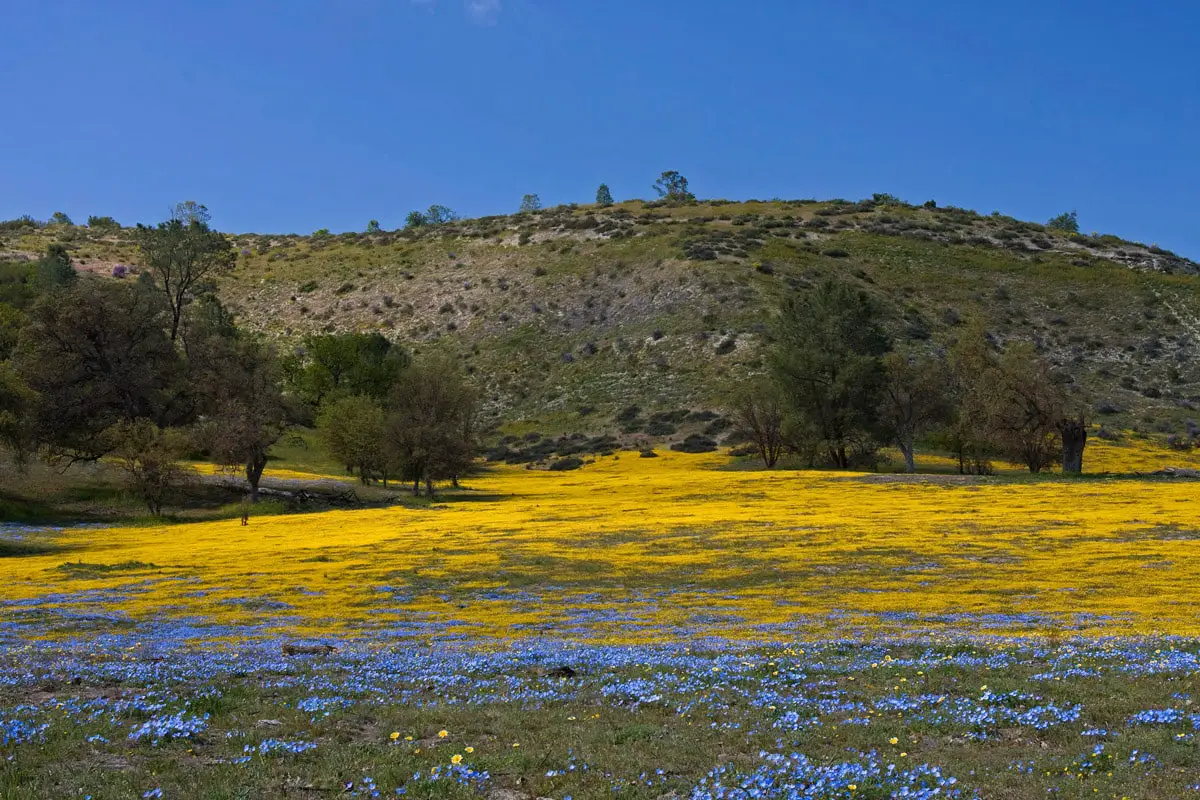
10
Dry Creek wildflower meadows, Tulare County
 33.5%
33.5%
Tulare County
One of the most impressive floral displays in this part of California, in sycamore alluvial woodlands and open grasslands.
The landscape there is not entirely natural: part of this wonderful grassland was restored after the closure of the gravel mine.
 Recommended books
Recommended books
California’s National Parks: A Day Hiker’s Guide
California’s state and national parklands have preserved the glorious natural wonders of this state. These wonders have been chronicled in this guide by John McKinney, hiking columnist for the Los Angeles Times for 18 years. In this guide, McKinney, known to his readers as “The Trailmaster,” has identified the finest hikes that each parkland has to offer. California’s National Parks describes over 150 walking adventures in famous national parks as well as those in federally-managed national monuments, preserves, and recreation areas.
California’s Changing Landscapes
This is the first lavishly illustrated and easy-to-read layperson’s guide to California’s unique plants and diverse plant communities. Its readers will enjoy a wide range of high-quality drawings and beautiful color and black-and-white photographs of California’s plants and landscapes. They will also learn the history of how California’s vegetation has changed due to human activities over the past two centuries.

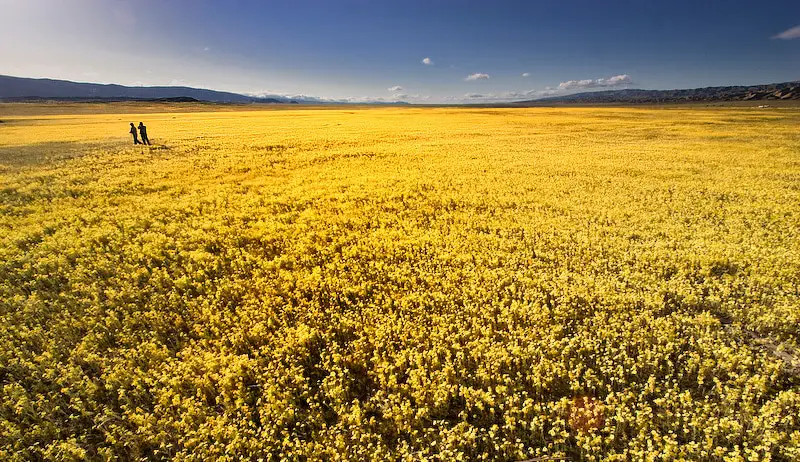
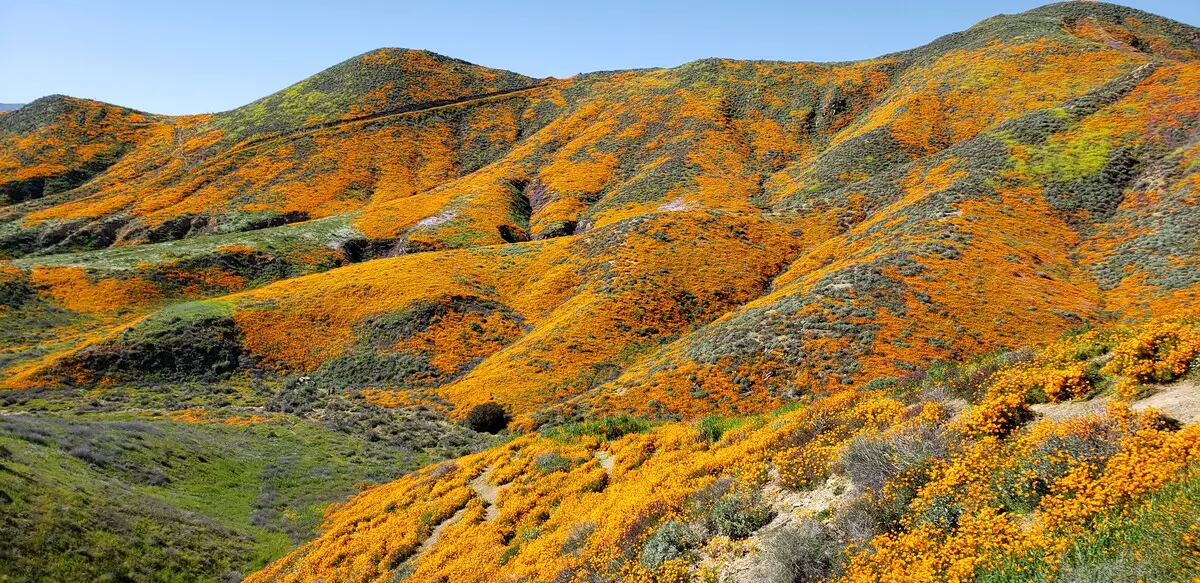
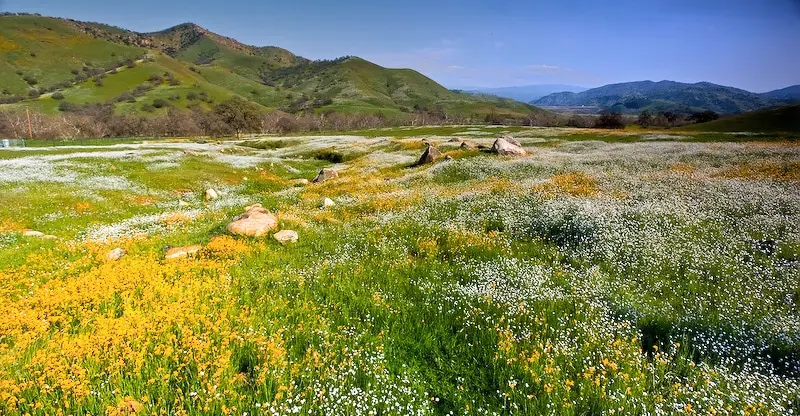


Really good info. I just wish the photos were not so heavily edited.
Thanks. Yes, have to admit that these 10 years ago I had such a vice…
[…] years Super Bloom in Southern California had everyone in a frenzy to go photograph in the California Poppies. In the […]